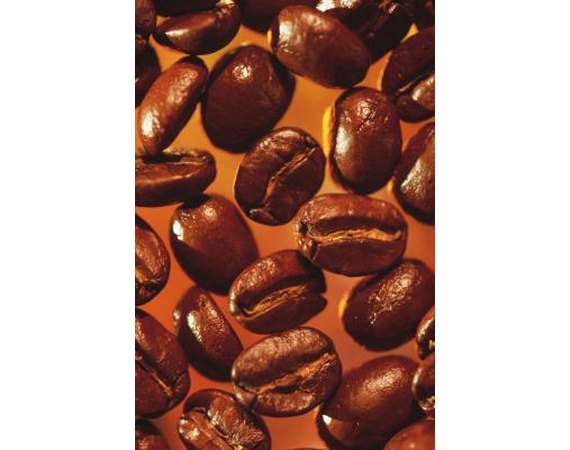
0 members
0 Anonymous Members

The newest member is Ashley1
Most users ever online was 45 on 4/4/2020, 17:31

In different eras and different countries, coffee has been made in a variety of ways, including boiling, steeping and filtering. Whatever the method, coffee has always been made using hot water. An alternative method that's been around since the 1960s, but is only just becoming widely known, uses cold water instead. While the idea may take some getting used to, it does seem to have its advantages. Add this to my Recipe Box.

Coffee plants are easily grown at home. For that reason, some people grow coffee beans as a hobby. Once you grow and harvest the beans, the next step is drying them. By removing most of the moisture from the coffee beans, you preserve them. There are a few ways to dehydrate fruits and vegetables. Using a food dehydrator is a lot faster than Sun-drying which is how most coffee beans get dehydrated. A food dehydrator is a small appliance that sits on the kitchen counter. Once you dry the coffee beans, you can store them before grinding the beans to make coffee. Add this to my Recipe Box.
Roasting coffee beans at home can let you customize your coffee to your exact tastes. Coffee beans can be roasted on pans in the oven, but you will more often than not end up with scorched or burned coffee beans. The good news is that a simple coffee bean roaster can be made at home for little expense. All that you will need is a hot air popcorn popper, a high-temperature thermometer, and a digital timer. Now you can get the exact roast you want. Add this to my Recipe Box.

Coffea arabica and coffea robusta are flowering perennial shrubs that are prized for the flavorful coffee beans they produce. Native to Ethiopia, coffee shrubs grow best in areas where the average annual minimum temperature is warmer than 40 degrees F. Unfortunately for gardeners in the United States, this growing requirement makes it necessary to rule out the idea of growing your coffee outdoors. Luckily, both coffea arabica and coffea robusta can be grown indoors as small trees. With the proper care, your coffee tree will start to produce beans in four to five years. Does this Spark an idea?

The aroma of freshly ground Colombian espresso or a blend of roasted Jamaican and Hawaiian coffee beans fills the air and welcomes customers into your coffee shop. Selecting coffee varieties for a specialty shop involves more than just buying the first beans you find on the Internet. To maintain consistency in your product, you need to cultivate reliable sources for quality coffee beans. Add this to my Recipe Box.

Water pills, more often referred to as diuretics, help your body get rid of excess water and sodium. Water pills make your kidneys deposit more sodium into your urine. That extra sodium takes with it water from your blood. This process, according to the Mayo Clinic, thins your blood and relieves pressure in your arteries. Other People Are Reading How Do Blood Pressure Pills Work? Diuretic Joint Pain Types of Water Pills Loop diuretics are water pills that block the absorption of sodium, which will then deposit the sodium into the kidneys for urination. Thiazides affect your body much like loop diuretics. Potassium-sparing water pills keep potassium in the system while expelling the sodium through urination.

Coffee beans have a limited shelf life. The oils in the bean are what give the coffee its flavor. These oils are released during the roasting process. The oils begin to decay when the beans are roasted. Once the roasted beans are ground, they start to lose their flavor even faster. The best storage method for coffee beans will help them retain the most flavor and aroma. Air and moisture are the two most important elements to be avoided in coffee bean storage. The best storage methods differ for green coffee beans, roasted coffee beans and ground coffee beans. Does this Spark an idea?

Coffee makers that use liquid concentrated coffee generally are larger machines that are intended for commercial or office use. These devices have a much-higher purchase price than standard coffee makers or even the more popular "pod" coffee makers. Does this Spark an idea?
If you are looking for a homemade gift for a coffee lover, then consider making candy coffee beans. Coffee beans contain a potent taste, but dipping them in chocolate will add a sweet flavor. The coffee beans contain a high amount of caffeine, but the chocolate adds a moderate amount of saturated fat, which makes them a treat to eat--in moderation. Place your chocolate-covered coffee beans in decorative tins, and you will have an inexpensive gift for any occasion. Add this to my Recipe Box.

The green fairy, or "la fée verte" as it is known in French, is a commonly used term for absinthe. Absinthe is a very strong alcoholic drink that is flavored with various plants and herbs. The beverage became popular among bohemian French artists in the late 19th century and earned the "green fairy" nickname because of its green tint. Due to its high alcohol content and the people associated with its consumption, absinthe has been considered a controversial beverage for over a century. Add this to my Recipe Box.

Last comments